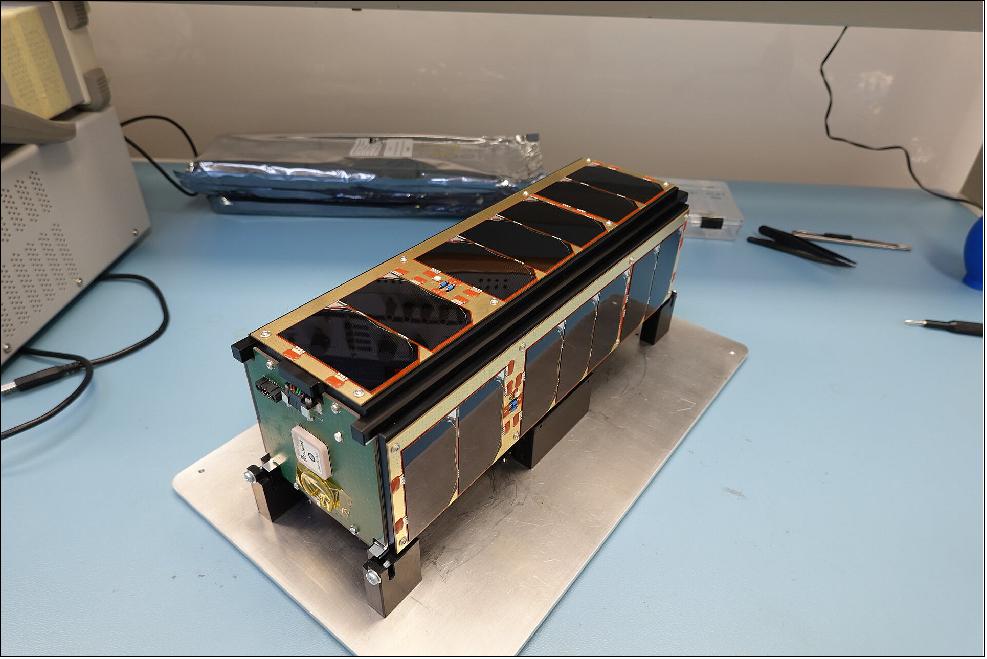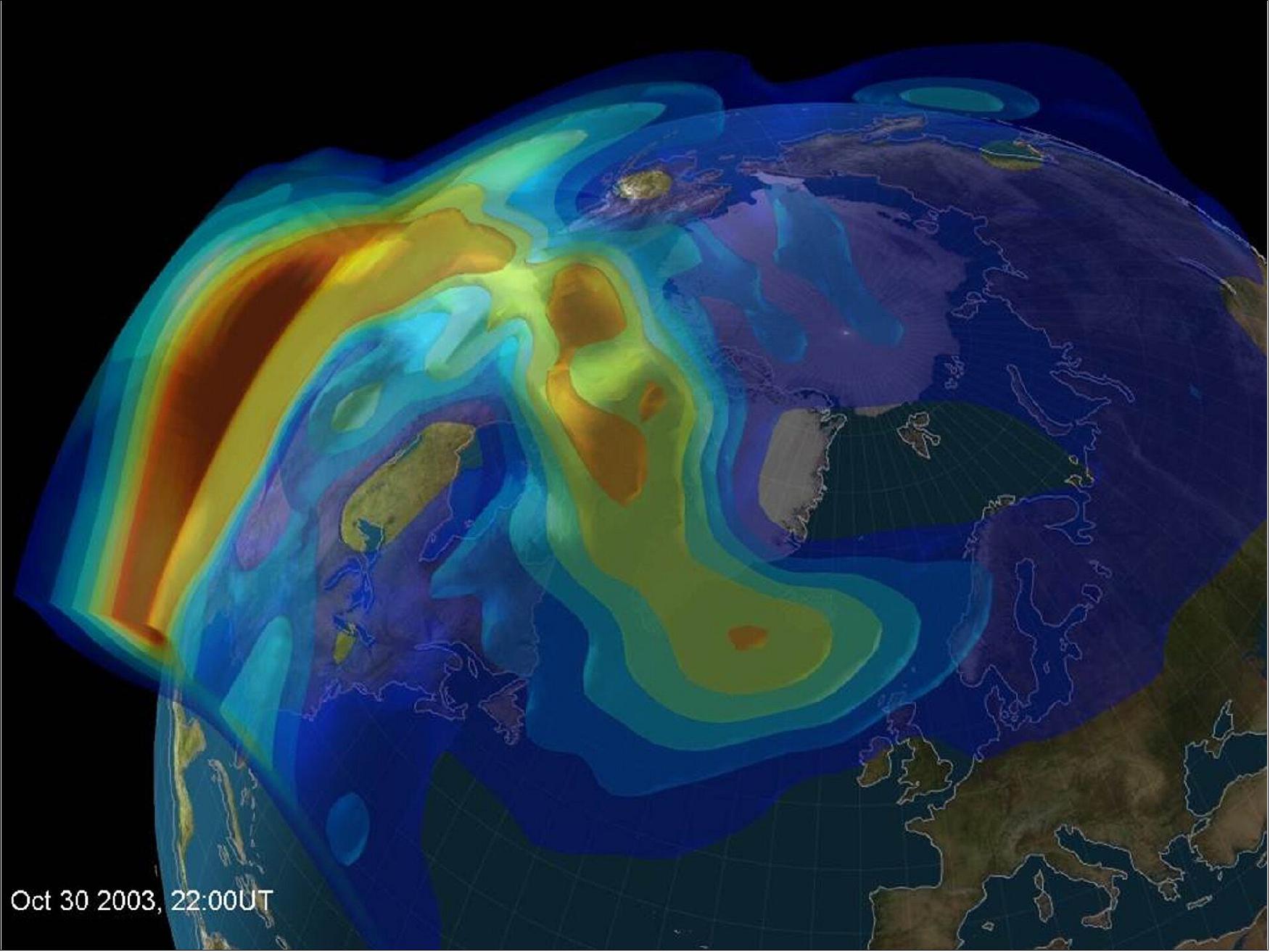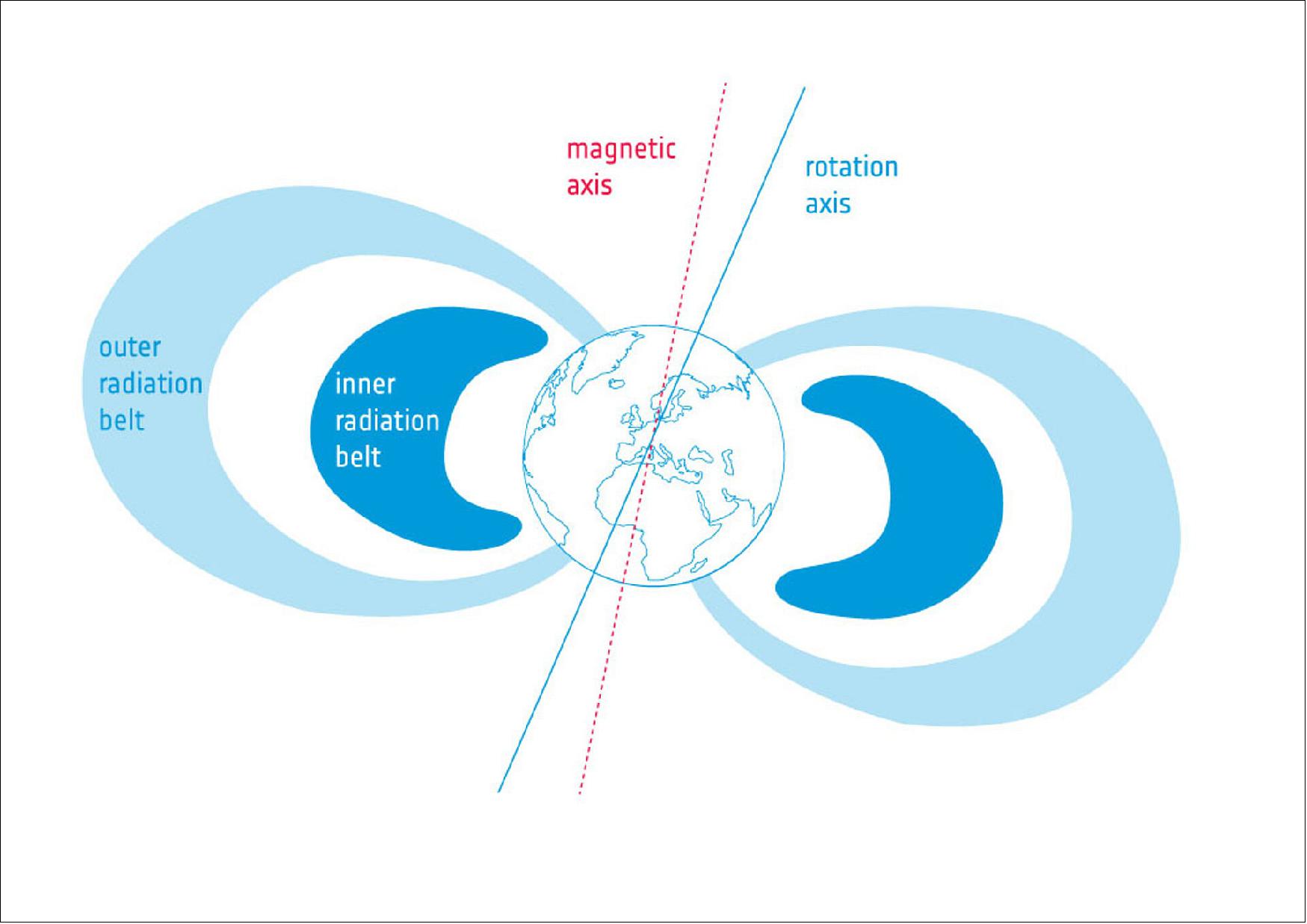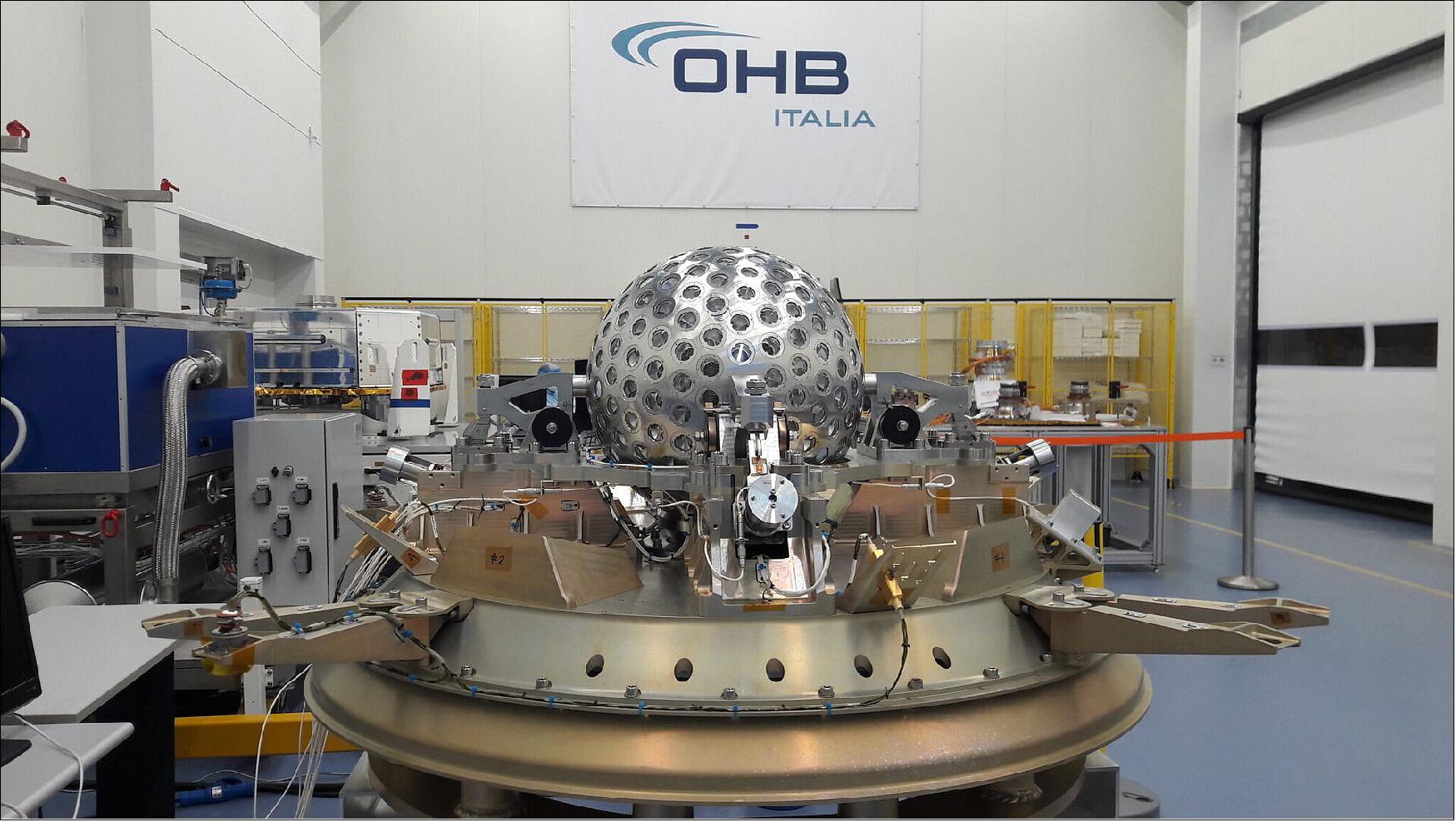Trisat-R Nanosatellite
Non-EO
ESA
Quick facts
Overview
| Mission type | Non-EO |
| Agency | ESA |
| Launch date | 13 Jul 2022 |
Trisat-R
Spacecraft Launch Sensor Complement References
Trisat-R is an ESA-financed nanosatellite, due to lift off aboard the inaugural flight of Vega-C this Wednesday, will operate an AI system in the harsh, radiation-wracked environment of the Van Allen Belts. The shoebox-sized Trisat-R – one of six ‘CubeSats' on the flight, headed up to a rarely-trafficked close to 6000 km altitude orbit – is also carrying radiation-detection payloads from CERN, the European Council for Nuclear Research, Slovenian firm SkyLabs and ESA itself. 1)
A CubeSat made from three standardised 10-cm boxes, Trisat-R is Slovenia's second space mission, following the original remote-sensing Trisat, which flew aboard Vega into a 530 km low-Earth orbit in September 2019. Like its predecessor, Trisat-R has been developed by the University of Maribor in Slovenia with SkyLabs. 2)

"ESA has supported the manufacturing, assembly and testing of Trisat-R through the ‘Fly' element of our General Support Technology Programmme, which opens up in-orbit demonstration opportunities for European companies," comments Kenza Benamar of ESA's GSTP Office.
"In the case of Trisat-R, this includes the solar panels, from DHV, antennas and CubeSat deployer from ISISpace, and the satellite structure from RIEDL AeroSpace, as well as the main NANOsky platform from SkyLabs. The idea behind the Fly element is that the best way to prove the technology is ready for space is to actually test it there for real."
Spacecraft
NANOsky I is the first generation of highly miniaturized nanoscale platform from SkyLabs with fault tolerant features as would be expected in high-end systems. SEE immunity, innovative error mitigation techniques, sophisticated three-level FDIR policy, redundancy on all critical functions and thoughtful component selection ensure robustness, high reliability and availability of the platform. On-board data handling functionality exploits the advantages of the reliable hot redundant CAN networking with built-in error detection mechanisms and a ruggedized and fail-safe harness to reduce the overall system complexity and to extend the miniaturization aspect.
The 3U CubeSat has a mass of ~5 kg. The satellite is 2-axis (optionally 3-axis) stabilized (3 magnetorquers, solar and highly sensitive magnetic field sensors). Power is provided by fixed solar panels along with a 30 Wh battery. The TM/TC communication is provided in VHF (GFSK, adjustable baud rate), UHF (GFSK, adjustable baud rate). Trisat has a downlink in the UHF frequency band and periodically transmits beacon signals in the form of several telemetry frames with a period of approximately 400 seconds. Additionally, telemetry frames are transmitted in response to telecommand queries, which are expected to take place when the satellite is above the ground segment at the University of Maribor.
NANOhpm of SkyLabs is a RISC-V high-performance onboard computer with PicoSkyFT processor as a Supervisor; it performs measurements of GNSS scintillations using an open GNSS receiver and demonstrates Radiation Hardened by Design mitigation techniques for protection of high-performance and high-density electronic components.
The Nanolink of Skylabs is a highly miniaturized S-band communication module operating in a close radio loop to demonstrate operation in harsh environment. The module was characterized in CERN receiving radiation dose equivalent to 175 years in LEO.
Launch
Vega-C is Europe's new launch vehicle, due to lift off on 13 July from Europe's Spaceport in French Guiana. Its main payload is Italy's mirrored satellite LARES-2, whose orbit will be tracked by laser to look for subtle distortions in space-time caused by Earth's own mass.
Orbit of LARES-2: Circular MEO (Medium Earth Orbit) with an altitude of 5893 km, eccentricity of 0-0.0025, inclination of 70.16º.
Also aboard are six CubeSats: AstroBio CubeSat (Italy) investigating biomolecule-detection; Greencube (Italy) growing plants in microgravity; ALPHA (Italy) aims to help understand phenomena related to Earth's auroras; MTCube-2 (France) and Celesta (France), both studying the effects on radiation on electronic systems and finally the ESA-backed Trisat-R (Slovenia). Three CubeSats are headed into medium-Earth orbit.
CubeSat Name | CubeSat Provider/Operator | Orbit | Function |
Alpha, 1U CubeSat | NPC Spacemind, Italy | MEO (~5900 km) | Technology demonstration |
AstroBio CubeSat (ABCS), 3U | Sapienza, University of Rome, Italy | MEO (~5900 km) | Immunoassay research |
CELESTA (ROBUSTA 1D), 1U | CERN/University of Montpellier | LEO (~ 500 km) | Technology demonstration |
GreenCube, 3U CubeSat | Sapienza, University of Rome | LEO (~ 500 km) | Space farming |
MTCube-2 (ROBUSTA 1F) | University of Montpellier, France | LEO (~ 500 km) | Technology demonstration |
Trisat-R, 3U CubeSat | University of Maribor, Slovenia | MEO (~ 5900 km) | Technology demonstration |
"Thanks to the opportunity ESA made available for us to fly on Vega-C, Trisat-R will be flying at more than ten times the orbital altitude of the original Trisat," explains Trisat-R project manager Iztok Kramberger of the University of Maribor.
"So the mission payloads are focused on investigating the peculiarities of this largely unexplored environment, which is at the heart of the ionosphere – an outer, electrically active, layer of Earth's atmosphere – as well as the inner Van Allen radiation belt."
It was radio pioneer Guglielmo Marconi who helped prove the existence of the ionosphere.
Back in 1901 he managed to transmit radio signals across the Atlantic Ocean, previously thought impossible due to Earth's curvature. This was enabled by the signals reflecting off the ionosphere.
Today this layer is a major influence on an everyday technology: ‘scintillations' due to passage through the ionosphere are a major error source in satellite navigation.
Sensor Complement
SpaceRadMon (Space Radiation Monitor)
The CERN instrument measures the Total Ionization Doze (TID), the number of Single Event Upsets (SEUs) and Single Event Latchups (SELs) that provide sufficient information to characterize the space environment through the HEH fluence.
CIMERA (CubeSat Highly Integrated MEmory Radiation Assurance)
CIMERA performs in-space testing and monitoring of Single Event Upsets (SEUs), Multiple Bit Upsets (MBUs), Single Event Functional Interrupts (SEFIs) and Latch-Ups.
"Trisat-R's NANOhpm experiment will probe this phenomenon by performing satnav fixes in the midst of the ionosphere," explains Tomaž Rotovnik, CEO of SkyLabs. "Using a pre-trained AI neural network it will attempt to identify and compensate for scintillation effects. Another experiment will assess the performance of software-defined radio within this challenging environment."

Meanwhile Trisat-R's orbit will also take it through part of the Van Allen belts – regions of charged particles trapped in place within Earth's magnetic field, their existence unknown until the start of the Space Age. Additional payloads aboard the miniature mission will be performing a radiation census of this segment of space.

CERN has contributed its radiation monitor – developed from technology used to measure the Large Hadron Collider's surroundings – while ESA is flying its CHIMERA board, the latest in a family of payloads testing the susceptibility of commercial computer memories to space radiation. SkyLabs' monitor will assess the cumulative damage done – known as ‘Total Ionising Dose'.
"While this altitude is incredibly harsh in terms of radiation, it offers potential advantages in terms of its orbital and thermal stability – with the satellite staying in sunlight most of the time," says ESA system engineer Johan Vennekens.
"So we'll see whether Trisat-R can stay operating without disruption, including its onboard AI. To help protect it the mission has an additional 7 mm of aluminium shielding around most of its electronics – and we want to know if that is sufficient."
SkyLabs' participation in the mission has already opened doors for the Slovenian space company, including becoming part of the consortium to develop a new space weather constellation.
Kenza adds: "ESA sees these kind of missions as very fruitful, especially for smaller Member States, as a way of building industrial capability. A somewhat higher level of risk is accepted with the lower pricetag of a small mission like this, but it still has everything that a bigger satellite has – just put into a smaller box."
LARES-2 is the primary payload of the Vega-C inaugural mission.

References
1) "AI CubeSat headed to Van Allen Belts on Vega-C," ESA Enabling & Support, 12 July 2022, URL: https://www.esa.int/Enabling_Support/Space_Engineering_Technology/AI_CubeSat_headed_to_Van_Allen_Belts_on_Vega-C
2) "TRISAT-R, Technology demonstration, science and education," University of Maribor, URL: https://www.trisat.um.si/trisat-r.html
The information compiled and edited in this article was provided by Herbert J. Kramer from his documentation of: "Observation of the Earth and Its Environment: Survey of Missions and Sensors" (Springer Verlag) as well as many other sources after the publication of the 4th edition in 2002. - Comments and corrections to this article are always welcome for further updates (eoportal@symbios.space).
Spacecraft Launch Sensor Complement References Back to Top